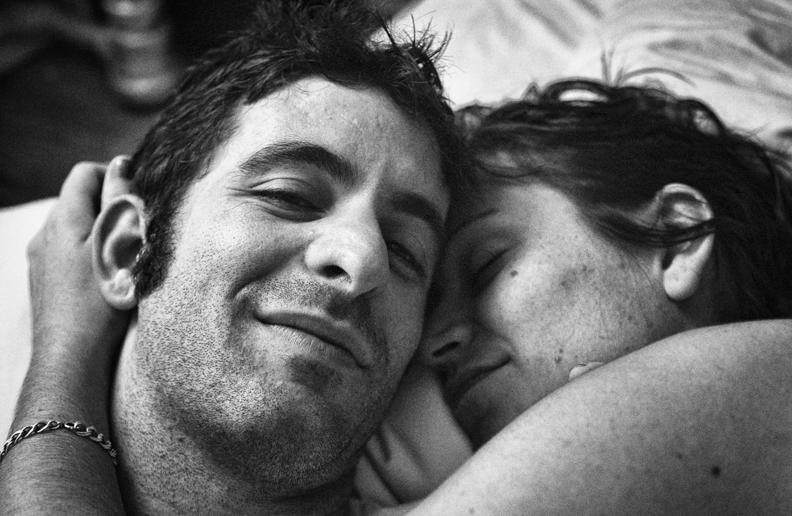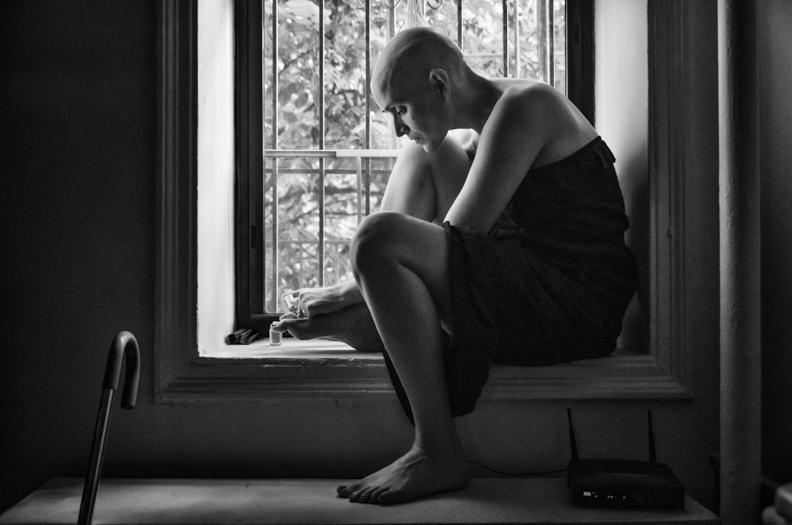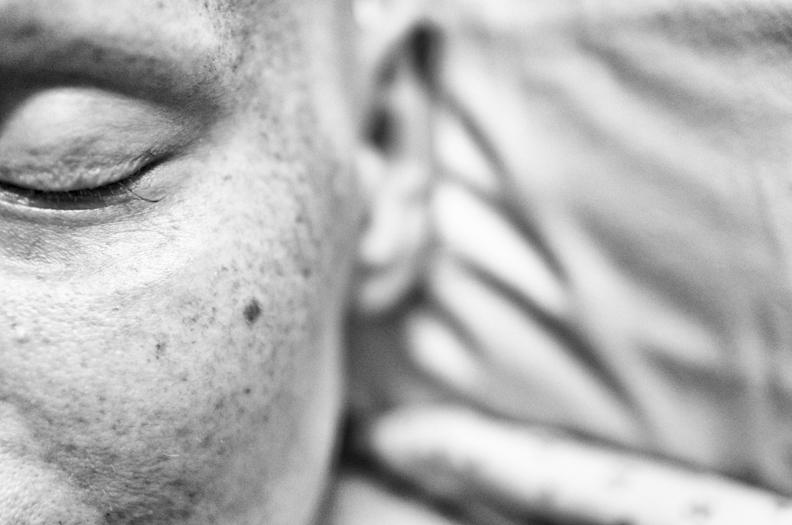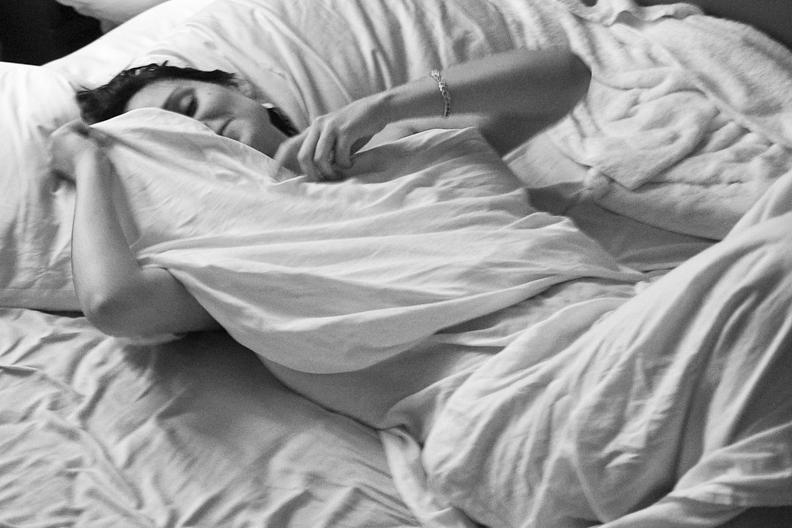Angelo and Jennifer Merendino met in 2005, in Cleveland, when Angelo applied for a bartending gig and could not take his eyes off the restaurant’s dark-haired manager. They got married two years later, in Central Park, five months before Jen was diagnosed with breast cancer. In a piercing, beautiful visual essay, Angelo, now a professional photographer, chronicled the next four years of treatments, showing his then-39 year old wife drinking a beer, shaving her head, hooked up to an IV, floating in the ocean, cuddling a hospital dog, and resting at home. Finally, he shot her empty, made-up bed and her tombstone. The photographs quickly ricocheted around the Internet. I spoke with Angelo, who recently compiled the images into a book, The Battle We Didn’t Choose, about his project and how he feels sharing it with the world. Our edited, condensed conversation is below.

Angelo Merendino
Slate: What made you want to record this process?
Merendino: It wasn’t even about deciding to do it. It was a necessity. Jen was diagnosed in February of 2008, five months after our wedding. We were thrown headfirst into the world of cancer. Thankfully our support group was incredible: Family and friends were there, they sent cards, brought dinner, held fundraisers. I can’t imagine what it would have been like without them. But when treatment ended and we started to put life back together, people would say, “Why aren’t you happy? Why are you still upset?” The truth is that everything we thought we knew had been leveled. Nothing felt the same. Mortality was real all of a sudden.
Then Jen’s cancer metastasized in 2010 and we were back in treatment. We noticed that people didn’t know what day-to-day life with cancer was like. I’m happy people don’t know. But we needed our friends and family to understand what we were going through because we needed their support. They were fading away. Jen was upset. So I started making the photos because maybe if people saw what we were facing, it would hit a little harder, make a little more sense.

Angelo Merendino
Slate: How did you choose which moments to document?
Merendino: I was photographing everything. Jen trusted me. She knew before anything that I was taking care of her—and that I knew when to put the camera away. There had to be time for us. Moments of me holding Jennifer, moments when we could just exist. But if I felt something in my gut, I made a photograph. Looking back, I realize it was kind of an escape, although it was strange because I was escaping into what I was escaping from.

Angelo Merendino
Slate: How do you think Jennifer felt about being the subject of the pictures?
Merendino: I don’t think she really thought too much about it. She was focused on taking care of herself. Receiving treatment is beyond a full-time job. She knew I was handling everything else, and that the camera was just part of it. But she did have a blog where she shared her experience. She felt it was important that that information be available. So much material online is overly clinical, a doctor telling you the side effects of some drug. Jen wanted to say, “I have breast cancer, I’m a woman in the trenches. Here’s what my life looks like.”

Angelo Merendino
Slate: How does it feel to have the images out in the world now?
Merendino: It depends on which way the wind is blowing. We started getting emails after I posted the photos to Facebook—some were from women with breast cancer who were inspired to continue with their treatment. It’s humbling to think the project might make a woman get a mammogram, or make couples hold each other a little closer, or give someone courage. I’m proud of that. But I get emails from people who don’t like what I’ve done. And I know it’s not personal but it’s hard.

Angelo Merendino
Slate: Why do you think the photographs have gotten such a huge reaction?
Merendino: I think the project is very human. It’s not clinical. Jennifer and I were young. It’s one thing to watch someone who is 75 or 80 go through this—it’s horrible and sad—but when it happens to someone you don’t expect, it becomes more real.
The photos started out as completely educational and informational. But what I noticed after Jen passed and I started editing was that people were really seeing how much we loved each other. That was never our intention. I’m proud that our love came through before the cancer, and that this ended up being above all a love story—more about who we were than about death and loss.

Angelo Merendino
Slate: How do you feel looking back over the images now?
Merendino: I’m glad I have the record. I really am. The photos have helped me as a widower understand what we went through. To see our love. They’re a bridge back to this time that I don’t want to run away from and let control the rest of my life. Jen told me, when she was sick, that she didn’t want me to be unhappy or alone. These photographs help me mourn but they also give me hope.

Angelo Merendino
Slate: Do you have a favorite, or one that stands out to you?
Merendino: I love the photographs of us next to each other where I held the camera at arm’s length. I’d tell her, “We have to squeeze closer together.” Looking at them, I can still feel her skin, smell her perfume. The book’s cover photo is one I only came across a few weeks before I finished putting everything together. I made it when we were dating long distance. I was visiting Jen in New York and it was one of those happy accident pictures: She’s lying in bed and has the sheets over her. She’s blurry. I remember looking over and it hit me and I thought, “That’s Jennifer.” When I see that photograph now, it takes everything else away.
